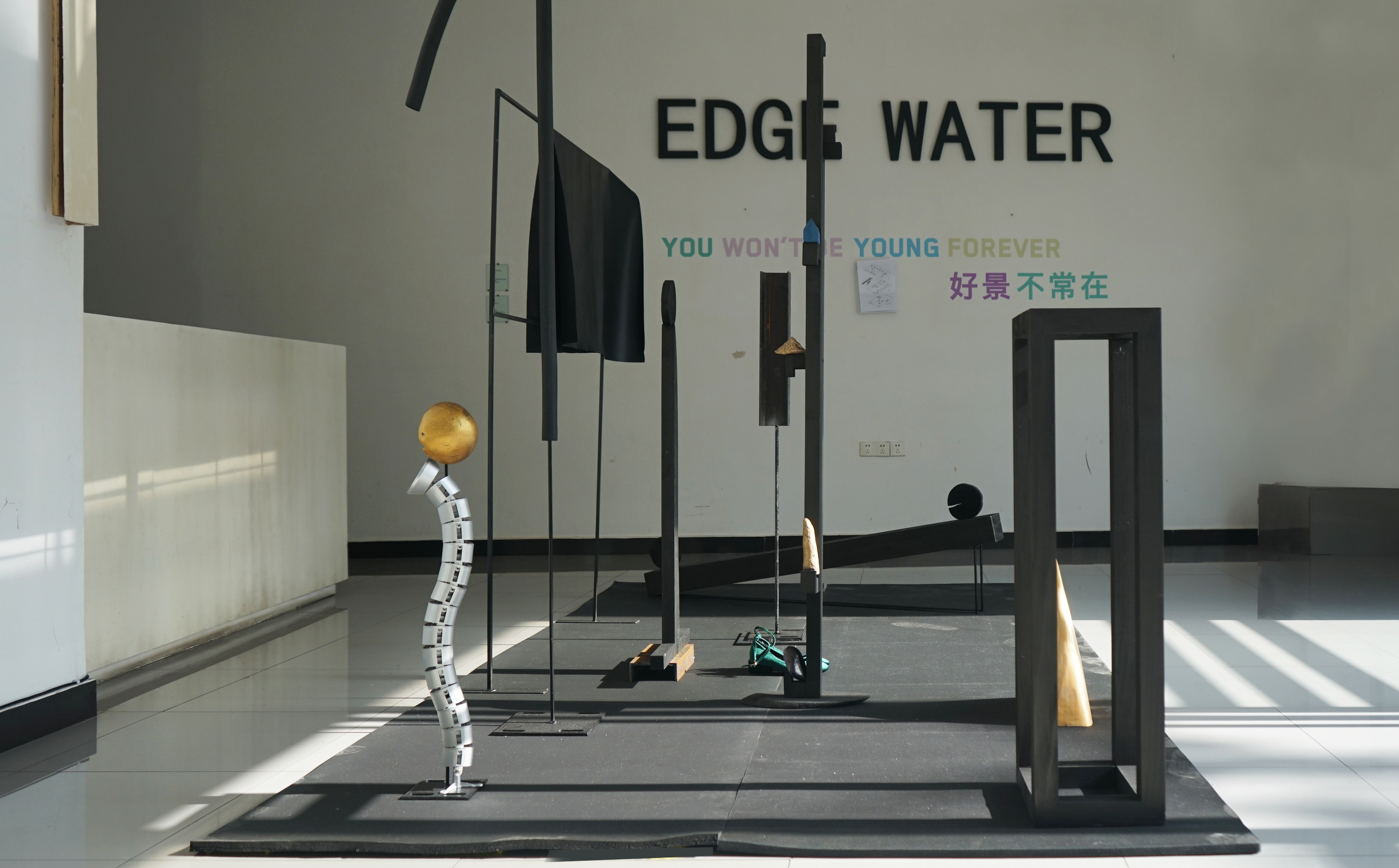 EDGE WATER, 2016. Installation view.
EDGE WATER, 2016. Installation view.Spine model, steel bars, wood, coconut shells, embroidered shoes, PVC pipes, etc.

Sculpture Draft,
 Sculpture Draft.
Sculpture Draft.EDGE WATER (2016) unfolds as a fragmented landscape of failed utopias—an assemblage of discarded structures, bodily remnants, and spectral architectures that resist cohesion. The spine model, steel bars, and embroidered shoes form a precarious anatomy, as if remnants of an abandoned dream of progress. The skeletal frame of the installation echoes the infrastructure of a world half-built, or half-collapsed, where modernity’s promises of stability and permanence give way to disintegration.
For the artist, gathering is a fundamental mode of existence—an intimate and adaptive engagement with objects not as consumable commodities, but as entities carrying their own histories and energies. Having grown up in a socialist country shaped by an intense ideological pursuit of stability through control, the artist navigates between fluid identities and methodologies as a means of resisting rigidity and dogma. By attuning themselves to the intrinsic energy of materials, the artist transforms these found elements into reflective surfaces, revealing insights into their own individuality and vitality.
Commissioned for the exhibition You Won’t Be Young Forever, curated by Biljana Ciric, this work emerged from field research, studio visits, and ongoing discussions on the youngest generation of artists in China. Rather than defining artistic expression by birth years, the exhibition loosely focuses on artists born from the mid-1980s to early 1990s, highlighting their experimental practices. The timing of this exhibition is a response to China’s evolving art system, where young artists are often pushed directly into commercial gallery circuits, leaving little space for radical experimentation. Independent artist-organized exhibitions—once a dominant force for presenting avant-garde work—are increasingly rare.
https://myartguides.com/exhibitions/shanghai/you-wont-be-young-forever/
https://aaa.org.hk/en/collections/search/library/you-wont-be-young-forever
For the artist, gathering is a fundamental mode of existence—an intimate and adaptive engagement with objects not as consumable commodities, but as entities carrying their own histories and energies. Having grown up in a socialist country shaped by an intense ideological pursuit of stability through control, the artist navigates between fluid identities and methodologies as a means of resisting rigidity and dogma. By attuning themselves to the intrinsic energy of materials, the artist transforms these found elements into reflective surfaces, revealing insights into their own individuality and vitality.
Commissioned for the exhibition You Won’t Be Young Forever, curated by Biljana Ciric, this work emerged from field research, studio visits, and ongoing discussions on the youngest generation of artists in China. Rather than defining artistic expression by birth years, the exhibition loosely focuses on artists born from the mid-1980s to early 1990s, highlighting their experimental practices. The timing of this exhibition is a response to China’s evolving art system, where young artists are often pushed directly into commercial gallery circuits, leaving little space for radical experimentation. Independent artist-organized exhibitions—once a dominant force for presenting avant-garde work—are increasingly rare.
https://myartguides.com/exhibitions/shanghai/you-wont-be-young-forever/
https://aaa.org.hk/en/collections/search/library/you-wont-be-young-forever